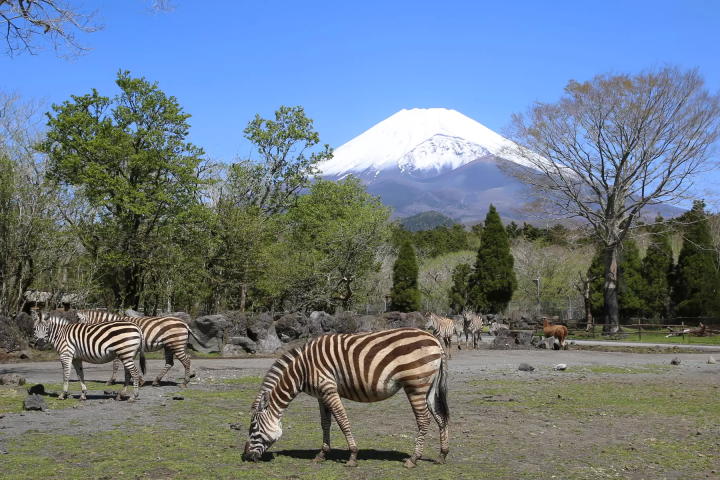Nara Park: Top 15 Attractions in 2025, Events, Deer, and More

Nara Park is one of Japan’s most famous sightseeing destinations and is home to world heritage sites, deer, and more. In this article, we go into full detail about the park and surrounding spots, events, and cost-effective ways to access the park.
Nara Park: Home to World Heritage Sites and Deer
Nara Park, located in the center of Nara City, is home to World Heritage sites like Todaiji Temple, which houses the Daibutsu Great Buddha statue, Kofukuji Temple, and Kasuga Taisha Shrine.
In this article, we introduce the top places to visit in Nara Park and its surrounding area, information on traditional festivals held at the park, and more.
Nara Park Guide
1. 10 Famous Places in Nara Park
2. Sightseeing Spots Near Nara Park
3. Festivals and Events in Nara Park
4. Nara Park’s History and Seasons
5. Deer in Nara Park
6. Access to Nara Park
7. Spend the Day at Nara Park
1. 10 Famous Places in Nara Park
First, we’ll introduce 10 famous places within Nara Park.
1. Todaiji Temple
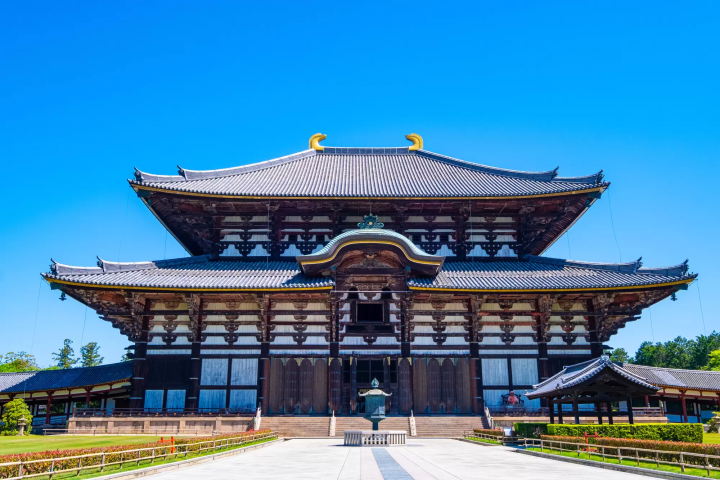
Todaiji Temple was first established in 728 and has a history of over 1,200 years. The highlight of Todaiji Temple is without a doubt the Nara Daibutsu (Great Buddha of Nara) that stands 15 meters in height. The Nara Daibutsu is known as the world’s largest Buddha statue casted in metal.
The temple was built by Emperor Shomu (*) and took five years to complete. It was destroyed by fires as a result of riots in 1180 and 1567, but was eventually reconstructed after 25 years.
Todaiji Temple was registered as a World Heritage Site in 1998 as part of the Historic Monuments of Ancient Nara (*).
Access: 15 minutes on foot from Kintetsu Nara Station, 32 minutes on foot from JR Nara Station
* Emperor Shomu: The 45th emperor of Japan. He was a devout Buddhist.
* Historic Monuments of Ancient Nara: A total of eight heritages in Nara, such as Todaiji Temple and the Five-Storied Pagoda, registered as UNESCO World Heritage Sites under a group name.
Hotels near Todaiji Temple
2. Kasuga Taisha Shrine
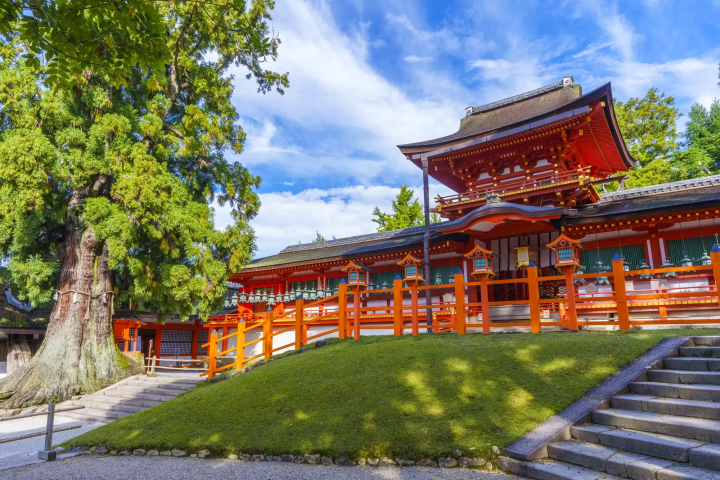
Kasuga Taisha Shrine sits at the base of Mt. Kasuga with a primeval forest that you can admire in the background.
Till this day, Mt. Kasuga’s primeval forest continues to be preserved in its primitive state. Mt. Kasuga is the sacred mountain of Kasuga Taisha Shrine, thus it was forbidden to cut down any trees for more than 1,000 years. Kasuga Taisha Shrine and the Kasuga Primeval Forest are registered under the Historic Monuments of Ancient Nara.
The shrine precinct is decorated with 2,000 stone lanterns (*) and 1,000 hanging lanterns. It’s believed that the lanterns were installed around the shrine to protect the capital and as a prayer for peace and prosperity.
All the lanterns in the shrine are lit during events annually held in February and August. The sights you can see during those times are simply magical and magnificent.
Access: 7 minutes on foot from Todaiji Temple
* Lantern: A lighting fixture made from stone or metal.
Hotels near Kasuga Taisha Shrine
3. Kofukuji Temple
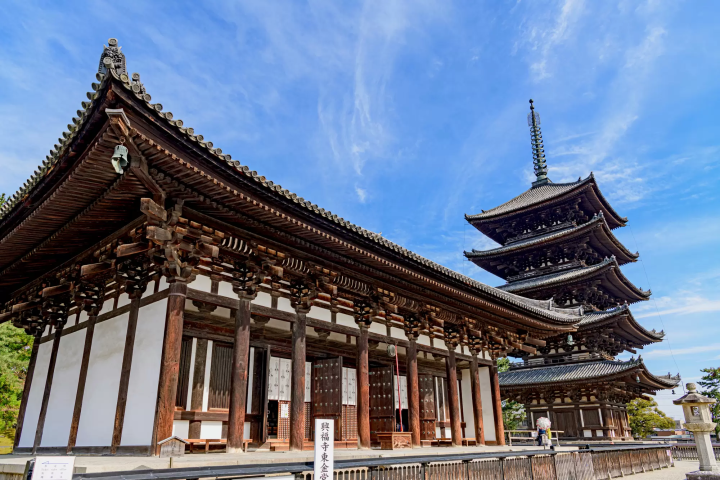
Kofukuji Temple is one of the Historic Monuments of Ancient Nara. It boasts a 1,300-year history.
Inside the temple grounds, you will find the Five-Storied Pagoda which is a symbolic structure of ancient Nara. Hokuendo, beautifully shaped like an octagon, and Tokondo, which houses several Buddha sculptures, are also found on the grounds.
Kokuhokan tells the story of the temple’s history and is a must-see. It houses many national treasures, but the one artifact you should pay attention to is the sculpture of Ashura. The Buddha sculpture is 153 centimeters in height with six arms and three faces, which radiates an incredible presence.
Access: 10 minutes on foot from Todaiji Temple, 2 minutes on foot from Kasuga Taisha Shrine
Hotels near Kofukuji Temple
4. Himuro Shrine
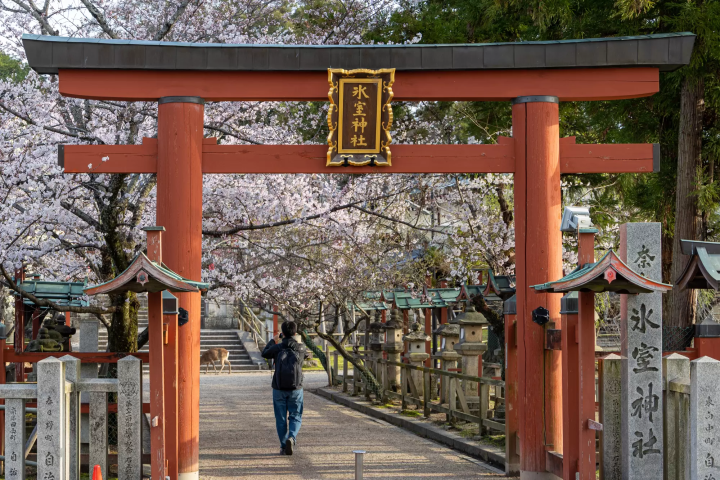
Himuro Shrine, much like the meaning of its name “icehouse,” is a shrine dedicated to the ice deity. It has 1,600 years of history.
A feature of Himuro Shrine is the ice offering, an event where shaved ice is offered to the deity, exclusively held during the summer. Apply at the reception and you will be given shaved ice in exchange for alms. You can also eat shaved ice after your temple visit.
Another event to keep your eye on is the Ice Offering Festival held every May 1st to pray for the prosperity of businesses in the ice industry. It’s a bit of an unusual festival as meter-long ice blocks are dedicated to the shrine, which is what brings so many people to visit during this time.
Access: 6 minutes on foot from Todaiji Temple, 7 minutes on foot from Kofukuji Temple and Kasuga Taisha Shrine
Hotels near Himuro Shrine
5. Nara National Museum
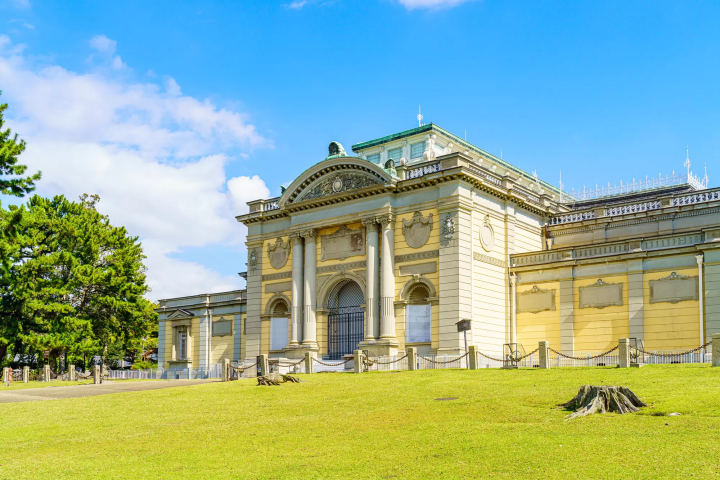
The Nara National Museum was founded in 1895 and exhibits the largest collection of Buddhist art in Japan. At the museum, you can view valuable Buddhist sculptures and paintings, some of which are important cultural properties, crafts, and more.
The Nara Buddhist Sculpture Hall was designed by Tokuma Katayama, an architect that was active during the Meiji period (1868 - 1912). He was known for a unique architectural style that was a fusion of French and Western art. It was designated an important cultural property in 1969.
The Shosoin Exhibition is held every autumn and brings visitors from all around the world who wish to catch a glimpse of historical cultural properties.
Access: 5 minutes on foot from Todaiji Temple, 7 minutes on foot from Kofukuji Temple and Kasuga Taisha Shrine, 1 minute on foot from Himuro Shrine
Hotels near Nara National Museum
6. Mt. Wakakusa
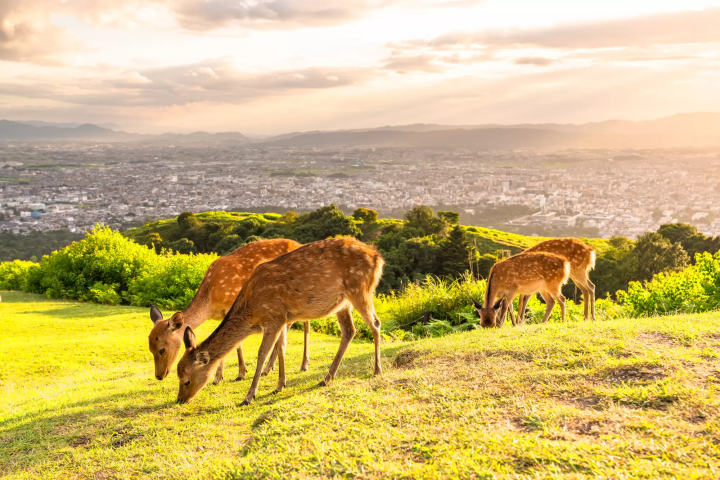
Mt. Wakakusa is a small 342-meter-tall hill inside Nara Park. Grass covers the entire hill and even just looking at it will make you feel rejuvenated.
It’s possible to hike to the summit of Mt. Wakakusa in about 30 to 40 minutes from the gate at the base of the mountain. The summit provides an unbroken view of Nara Basin and is a memorable sight you’ll want to etch in your heart.
Wakakusa Yamayaki is a traditional event that heralds the coming of spring every year in January. The entire hill is set on fire and creates a breathtakingly beautiful contrast with the clear winter night.
Access: 5 minutes on foot from Todaiji Temple, 21 minutes on foot from Kofukuji Temple, 1 minute on foot from Kasuga Taisha Shrine, 16 minutes on foot from Himuro Shrine and the Nara National Museum.
Hotels near Mt. Wakakusa
7. Nara Park Bus Terminal
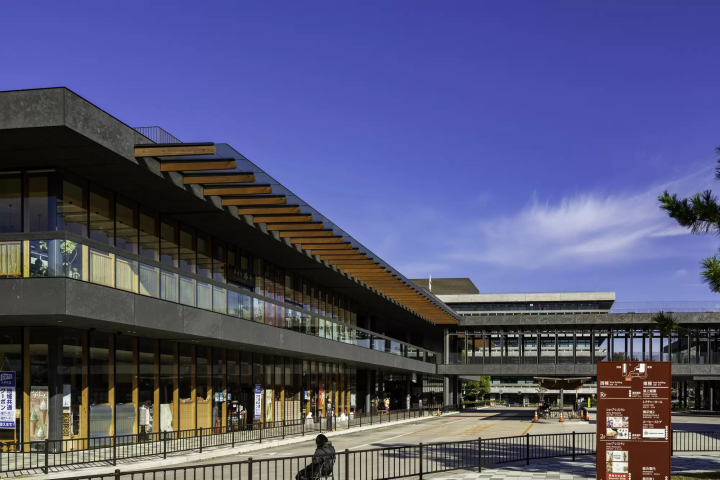
Nara Park Bus Terminal opened on April 13, 2019. On top of its role as a bus terminal, it also acts as a facility that houses exhibit halls displaying items associated with Nara, a tourist information center, souvenir shops selling local specialties, and restaurants.
The rooftop garden overlooking Nara Park is also an attraction. You’ll be able to see historic landmarks from a different perspective than you would on the ground.
Access: 8 minutes on foot from Todaiji Temple, 3 minutes on foot from Kofukuji Temple, 7 minutes on foot from Kasuga Taisha Shrine, Himuro Shrine, and Nara National Museum, and 18 minutes on foot from Mt. Wakakusa.
Hotels near Nara Park Bus Stop
8. Sarusawa Pond
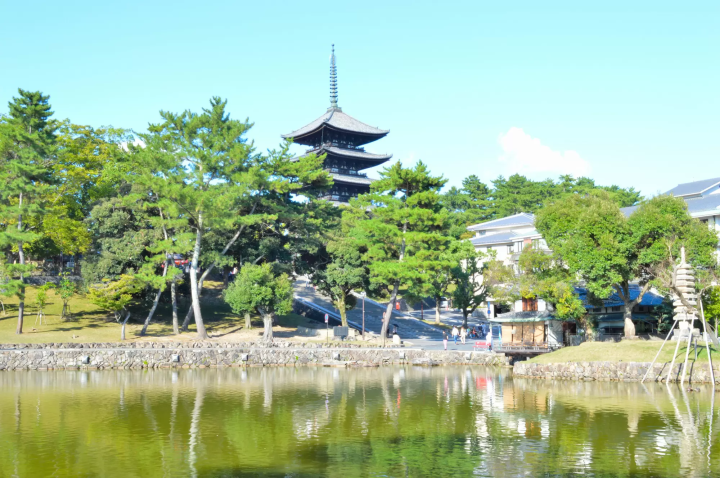
Sarusawa Pond is a small man-made pond next to Kofukuji Temple that has a circumference of 360 meters. The willow trees planted around the pond give it tons of ambiance. The reflection of the five-storied pagoda and willow trees in the water are popularly known as one of the Eight Views of Nara.
Uneme Shrine is located on the banks of Sarusawa Pond. The shrine was built to console the spirit of an uneme (*) or court lady who fell in love with the Emperor and drowned herself in Sarusawa Pond.
Uneme Festival is held on the night of the mid-autumn moon (*) every year to appease her spirit and pray for the happiness of the people.
Access: 14 minutes on foot from Todaiji Temple, 1 minute on foot from Kofukuji Temple, 4 minutes on foot from Kasuga Taisha Shrine, 11 minutes on foot from Himuro Shrine and Nara National Museum, and 7 minutes on foot from Mt. Wakakusa.
* Uneme: a low-class court lady who attended to the Emperor and Empress that took care of their meals and personal needs.
* Mid-Autumn Moon: the custom of gazing at the full moon on the 15th night of the eighth lunar month. The date of the mid-autumn moon changes every year.
Hotels near Saruzawa Pond
9. Yugayama Garden
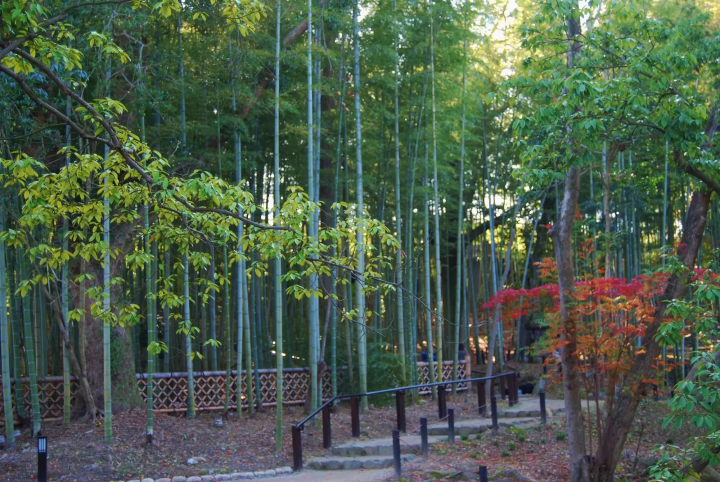
Yugayama Garden is a 1.3 hectare garden located to the south of Ukimido and Sagi Pond. It was originally the location of a villa that belonged to Kichirobe Yamaguchi, a businessman in the financial industry during the Meiji (1868 - 1912) and Taisho (1912 - 1926) periods. It was officially opened to the public in 2020 after restoration and maintenance was provided by the prefectural government.
The garden is a representation of modern-day Nara Park and has been visited by many prominent figures such as Naoya Shiga.
Access: 9 minutes on foot from Todaiji Temple and Kofukuji Temple, 7 minutes on foot from Kasuga Taisha Shrine, 11 minutes on foot from Himuro Shrine and Nara National Museum, 16 minutes on foot from Mt. Wakakusa, 14 minutes on foot from Nara Park Bus Terminal, and 12 minutes on foot from Sarusawa Pond.
Hotels near Yoga Mountain Garden
10. Isuien Garden
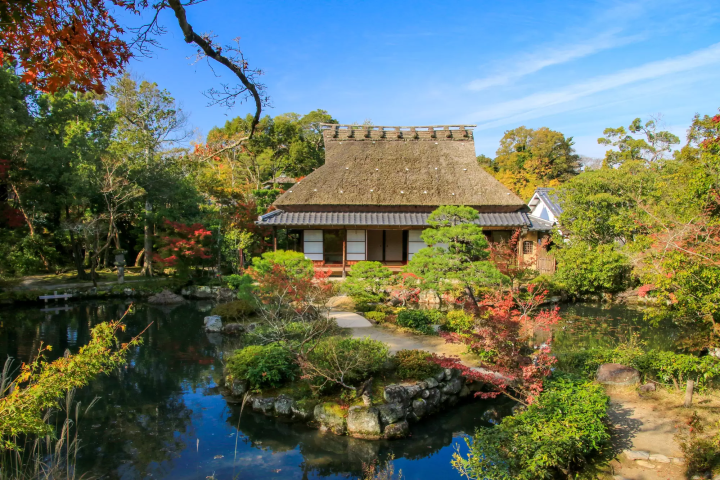
Isuien Garden is a garden situated between Todaiji Temple and Kofukuji Temple that possesses beautiful seasonal landscapes. It is divided into two parts known as the front garden and back garden; the front garden dates back to the Edo period (1600 - 1868) while the back garden was constructed during the Meiji period (1868 - 1912).
Todaiji Temple, Mt. Wakakusa, and Mt. Kasuga can be seen from the back garden. The landscape it creates together with the garden will truly touch your heart.
In the garden is the Neiraku Museum of Art. It features a collection of ancient Chinese bronzeware, ceramics from prosperous eras of Korea, and more. It’s worth making the visit to see.
Access: 4 minutes on foot from Todaiji Temple, 9 minutes on foot from Kofukuji Temple and Kasuga Taisha Shrine, 7 minutes on foot from Himuro Shrine and Nara National Museum, 17 minutes on foot from Yugayama Garden and Mt. Wakakusa, and 6 minutes on foot from Nara Park.
Hotels near Yishui Garden
2. Sightseeing Spots Near Nara Park
There are several destinations near Nara Park where you can learn more in depth about Nara’s historical features.
11. Nara Higashimuki Shopping Street
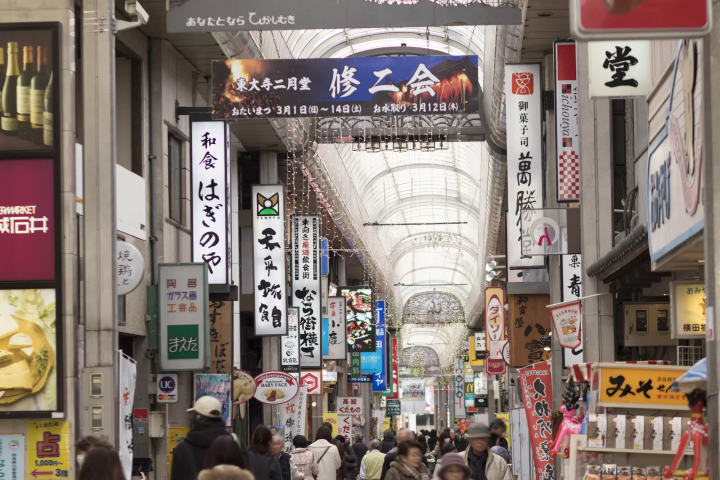
Nara Higashimuki Shopping Street is a shopping arcade next to Kintetsu Nara Station that was built over what was formerly Heijo-kyo 1,300 years ago. Currently, it is one of Nara’s leading business districts lined with countless shops extending from Omiya Street in the north to Sanjo Street in the south.
There is a reason why the shopping street is called “Higashimuki” (east-facing). Houses were only built on the west side of the capital during the Nara period (710 - 794) when Heijo-kyo was established and the orientation of all those homes faced towards the east as a result.
The shopping street is loved by both visitors and locals alike. Enjoy trying foods at various restaurants and shopping here!
Access: 2 minutes on foot from Kintetsu Nara Station, 15 minutes on foot from JR Nara Station
Hotels near Dongxiang Shopping Street
12. Nakagawa Masashichi Shoten Nara Flagship Store
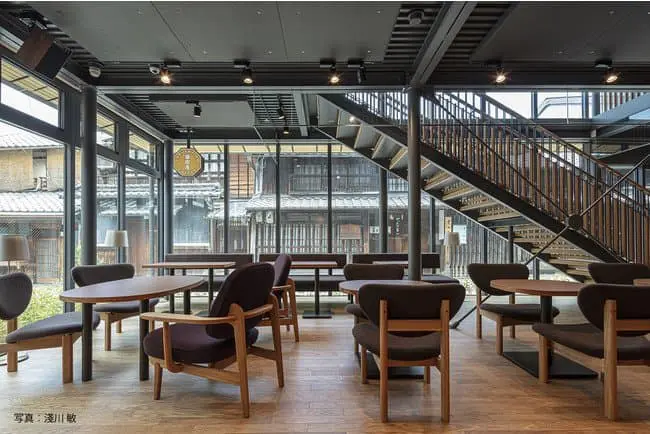
Nakagawa Masashichi Shoten is a long-established shop that first opened as a wholesaler of high-quality hemp fabrics in 1716. In April 2021, that same Nakagawa Masashichi Shoten opened a commercial complex called the Shika Saru Kitsune Building in Ganriincho, Nara.
Nakagawa Masashichi Shoten’s most popular products decorate the shelves on the complex’s second floor, where you can purchase clothes, fabric accessories, and more. The store carries approximately 3,000 items including Nakagawa Masashichi Shoten products exclusively available at this store as well as Nara specialties.
Sarutahiko Coffee, a popular coffee shop, and Kitsune, a sukiyaki restaurant run by sio which received one star in the Michelin Guide Tokyo, have locations in the complex. These shops have been gaining the attention of young consumers.
Access: 6 minutes on foot from Kintetsu Nara Station, 15 minutes on foot from JR Nara Station
Hotels near Nakagawa Masashichi Shoten Nara Main Store
13. Nigatsudo Hall
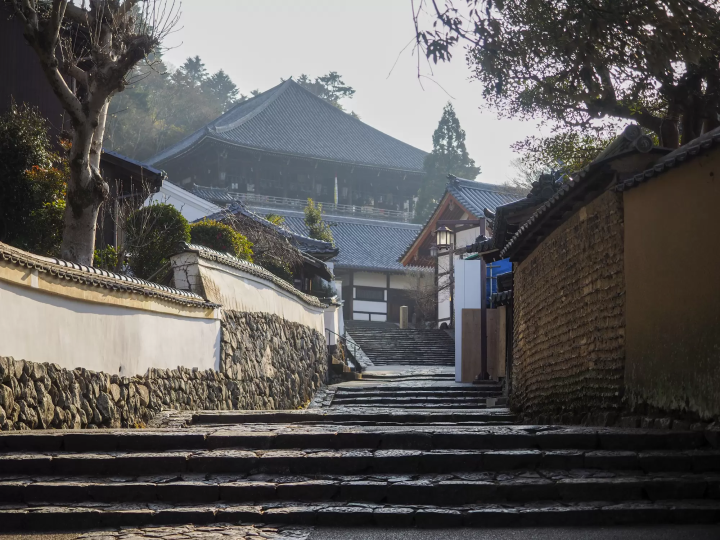
This is a temple building within Todaiji Temple that was constructed in 752. A huge portion of the building was lost due to skirmishes in 1180 and 1567 and what you see now was reconstructed in 1669. It was designated a national treasure in 2005.
Omizutori is held every March and is a ritual performed by drawing okozui (*) from a water well to give as an offering to Kannon.
Access: 23 minutes on foot from Kintetsu Nara Station, 40 minutes on foot from JR Nara Station, 13 minutes on foot from the Todaiji Daibutsuden/Kasuga Taisha-mae bus stop on the city loop bus.
* Okozui: fragrant water that at the time was believed to heal illnesses and grant wishes once consumed.
Hotels near Todaiji Nigatsudo
14. Naramachi
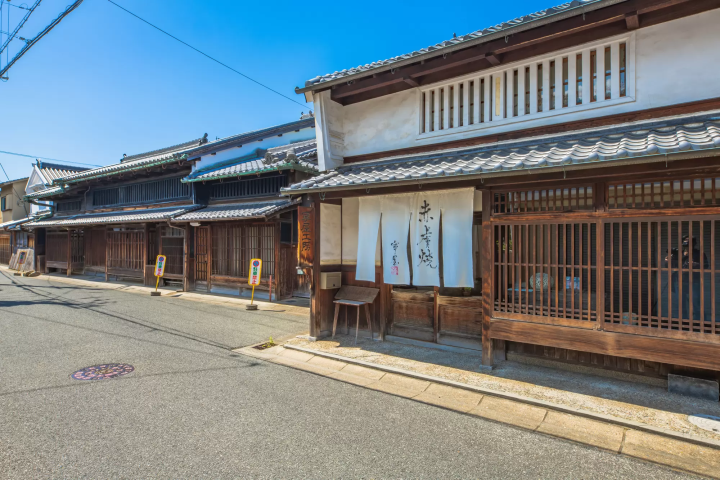
This area was developed during the Nara period (710 - 794) as Heijo-kyo’s gekyo (*) and even today is still filled with the ambiance and vestiges from the townhouses of that time period. The town is also home to many cafes and general stores where you can enjoy yourself while forgetting about the time.
It’s more than satisfying just to walk through town and looks like a painting no matter how you frame it. It’s also very popular as a photography spot.
Access: 2 minutes on foot from Kintetsu Nara Station, 1 minute on foot from JR Nara Station
* Gekyo: an area expansion to the east of Heijo-kyo.
15. Naramachi Koshi-no-Ie
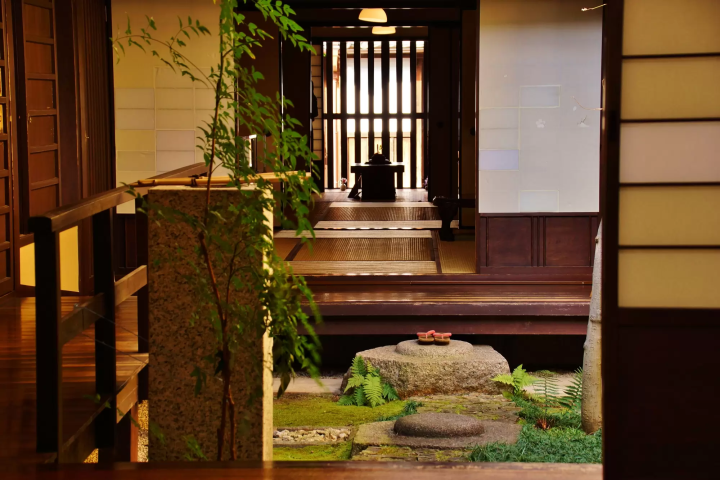
This facility is a reproduction of a traditional townhouse that would often be found in Naramachi from the late Edo (1600 - 1868) to Meiji periods (1868 - 1912).
It has a narrow entrance and long hallways, a style that is often referred to as the “bed of an eel.” Meanwhile, the stairs leading to the second floor are called box stairs and are shaped like boxes stacked on top of one another while ensuring storage space. This design effectively makes use of the narrow space available.
Tours are free, so please feel free to give it a visit!
Access: 18 minutes on foot from Kintetsu Nara Station, 24 minutes on foot from JR Nara Station
Hotels near Naramachi Lattice House
3. Festivals and Events in Nara Park
Many festivals and events are held throughout the year at Nara Park. In this section, we’ve selected a few of the most famous events to introduce. You can learn more details about each event on Nara Park’s website (Japanese).
Wakakusa Yamayaki
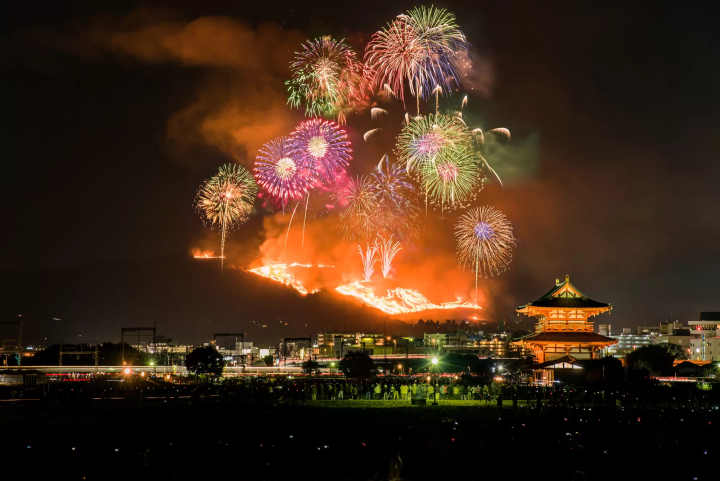
This is a traditional festival that heralds the coming of spring by setting the entire surface of Mt. Wakakusa on fire.
Yamayaki (“mountain burning”) begins around evening. At the signal of a horn, 100 people from the local volunteer fire department carrying taimatsu (*) will set fire to the mountain all at once. During the festivities, 600 fireworks will be launched into the night sky and heat up the festival even further.
Event Date: The fourth Saturday of January
* Taimatsu: a torch made from wood such as pine or a bundle of straw that is lit on fire.
Shosoin Treasure Hall Exhibition
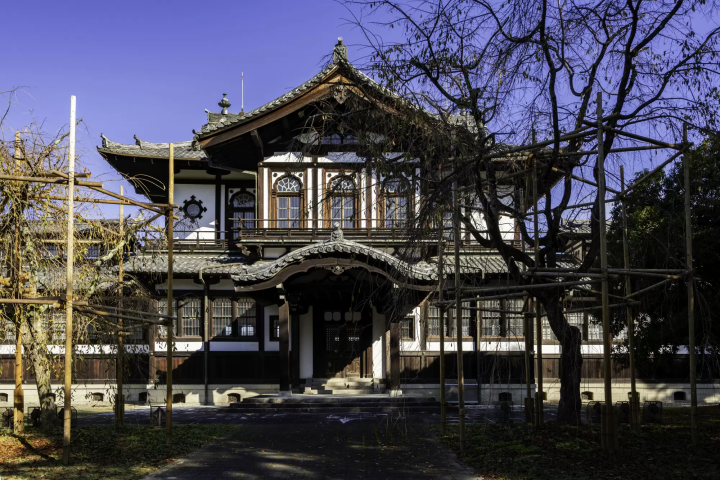
This exhibition takes place every autumn at the Nara National Museum. As many as 9,000 artifacts are stored in the Shosoin Treasure House and are released from under the chokufu (*) every autumn. During this time, the artifacts stored under the chokufu are made available to the public.
Around 60 artifacts are made newly available to the public each year which includes display items you won’t get to see very often like Emperor Shomu’s favorite artifacts. The artifacts that are made public change every year, so many people look forward to the exhibition around this time of year.
Event Date: Every autumn
* Chokufu: to be sealed by order of the Emperor.
Chugen Mantoro Festival
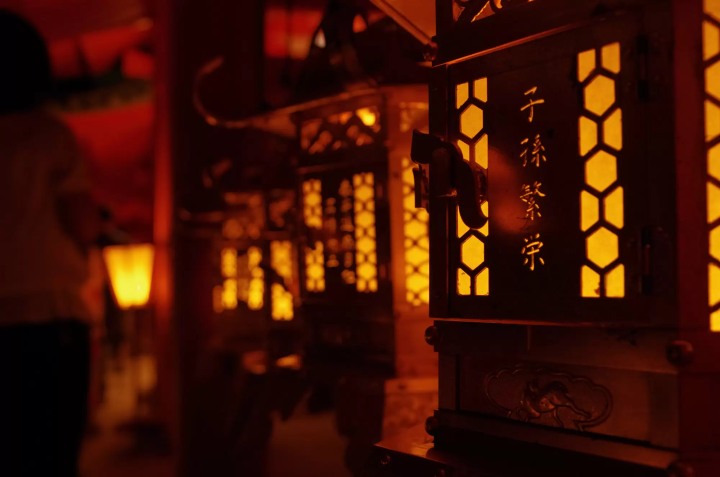
The Chugen Mantoro Festival is an event where a total of 3,000 lanterns are lit up in Kasuga Taisha Shrine. Lanterns were dedicated to the shrine by people in the past who had faith in the deities of Kasuga to pray for the safety of one’s family and prosperity in business. This tradition has continued for 800 years till this very day.
Those same lanterns dedicated over the centuries are lit up during the festival, bathing the shrine precinct in vermillion light that is truly magical.
Event Dates: Every August 14 and 15
4. Nara Park’s History and Seasons
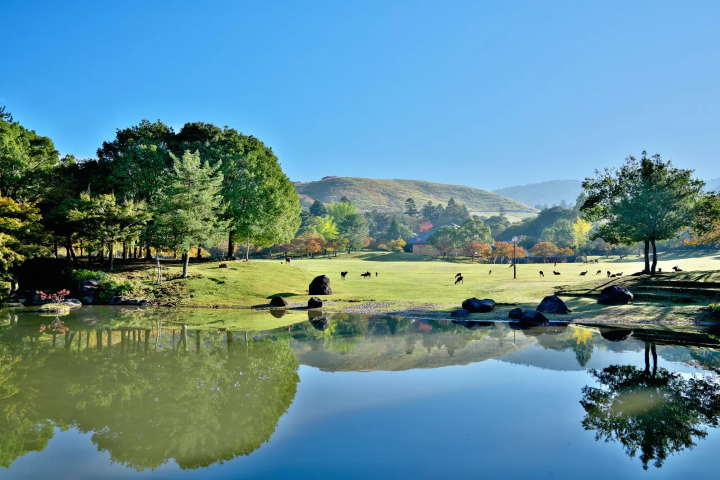
Nara Park is located in central Nara and has retained many of its historical structures with several types of flowers and plants planted around the park. The park offers various beautiful views throughout the year that captivates visitors.
Nara Park’s History
Nara Park’s official name is Nara Prefectural Municipal Park. It was first established on February 14, 1880 and holds 1,300 years of history within its grounds. A majority of the park is government-owned land.
Heijo-kyo (*) was established in Nara as Japan’s capital in 710. Religious buildings such as Todaiji Temple, Kofukuji Temple, and Kasuga Taisha Shrine were constructed inside what is now modern-day Nara Park as a result and are currently registered as World Heritage Sites.
Many of the festivals and events held during that era continue to be held even today.
* Heijo-kyo: a place established in 710 that acted as the political center for 70 years.
Seasons in Nara Park
In 1897, plants such as maple, cherry blossom, pine, and cedar trees were planted in Nara Park following the park’s establishment. These plants have walked through history together with Nara Park and continue to be a part of the landscape of its historical structures and nature.
The park is beautiful no matter what season it is, but the 1,500 cherry blossom trees that bloom in the springtime is what attracts the most visitors. The view of the cherry blossoms coupled with the temples and shrines is truly mesmerizing. In the autumn, maple trees color the park in reds and oranges, bringing its own quaint charm.
5. Deer in Nara Park
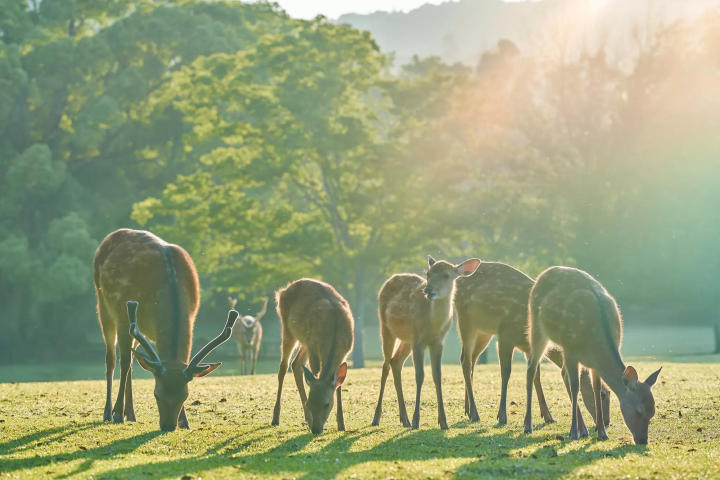
Something you’ll want to experience no matter what when you visit Nara Park is feeding the deer. However, the past few years have seen an increase in visitors who don’t follow the rules and has become an issue.
The next section contains information and precautions you should follow when feeding the deer.
The History of Nara Park’s Deer
Legend states that Takemikazuchi no Mikoto (*) came riding on the back of a white deer when the Emperor moved the capital to Nara and was dedicated to Mt. Kasuga. Since then, deer in Nara have been regarded as sacred messengers.
In particular, deer with white fur on their back legs are considered to be the descendants of the god’s children. Happiness may come to you if you’re able to spot these deer!
* Takemikazuchi no Mikoto: the god of swords and thunder that appears in Japanese mythology.
Deer Crackers
You are only allowed to feed deer crackers sold at stalls within Nara Park to the deer. Deer crackers are a rice cracker mainly made with rice bran and flour specifically for the deer. Absolutely no sugar, salt, or oil is used to make the crackers and is safe for the deer to eat.
Please understand that under no circumstances should you feed the deer anything else but deer crackers due to the risk of the deer getting sick.
Precautions When Feeding
・Do not feed the deer anything else but deer crackers
・The deer may try to steal your bags from you, so make sure to properly close and zip up any closures
・Please do not try to go near or touch the fawn
・The deer may try to suddenly take the cracker from you, so make sure to be careful and only feed small pieces at a time. You will be surrounded by deer if you try to feed them the entire cracker at once
・Do not chase any deer
・Do not use loud voices when speaking or try to tease the deer
・Do not litter the park with wrapping paper from the deer crackers or other trash. The deer may end up swallowing it by mistake
The Meaning Behind Bowing Deer
You may have heard that the deer in Nara Park will nod and bow to visitors. Many people interpret these bowing-like actions as an expression of gratitude, but it’s actually a demand for food from the deer!
Some people may end up too focused on how adorable the deer are when they bow, however the deer may instead become anxious and aggressive if you tantalize them with food without giving it to them.
Please understand that the deer are asking for food when they bow and give them deer crackers.
6. Access to Nara Park
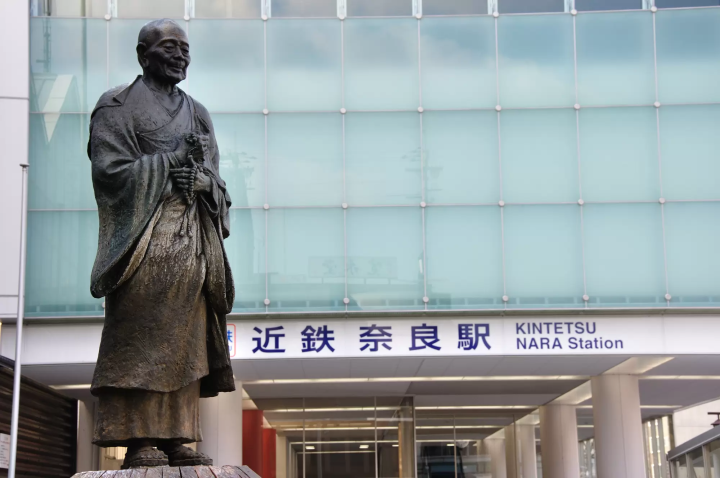
The first step is to take the Shinkansen (bullet train) to Kyoto or Shin-Osaka Station if you are traveling to Nara Park from Tokyo, Kyoto, Osaka, or Nagoya. Keep in mind that there are three ways listed below to get to the park from Kyoto or Shin-Osaka Station. You can save on travel by purchasing convenient travel passes.
* Please note that the following information is targeted towards international visitors.
JR Lines
The following three passes are convenient at a great value. Use these passes when taking the JR line to travel from Kyoto, Osaka, or Kobe to Nara Park.
Kansai Area Pass
Summary: An unlimited ride pass for local JR lines and buses in the Kansai area
Validity: It’s possible to choose between one (1) to four (4) days
Precautions:
Does not include rides on the Shinkansen (bullet train)
Can only be used by international visitors with short-term visas
Kansai Wide Area Pass
Summary: An unlimited ride pass for the Sanyo Shinkansen (Shin-Osaka ⇔ Okayama), limited express trains such as Haruka, Kuroshio, Thunderbird, Kounotori, and Super Hakucho, JR lines, and West Japan JR buses
Validity: Five (5) days
Precautions:
Can only be used by travelers to Japan with short-term visas
Either pass can be used to take the train to JR Nara Station. After you arrive, you can get to Nara Park by taking the city bus or by walking on foot (20 minutes) from the station.
Kintetsu Railway
The Kintetsu Railway is convenient when traveling from Nagoya to Kyoto and Osaka. The pass below is a great deal if you plan to take the Kintetsu Railway.
KINTETSU RAIL PASS
Summary: An unlimited ride pass for the Kintetsu Railway and Nara Kotsu Bus throughout the designated areas. The designated areas will vary based on the pass you purchase
Validity: It’s possible to choose between one (1), two (2), or five (5) days (the 5day plus pass is also available for access to a wider area)
Precautions:
Can only be used by travelers to Japan with short-term visas
The Kintetsu Rail Pass is a great deal that comes with complimentary tickets for sightseeing facilities in the Kintetsu area. Receive discounts for up to 40 facilities when you purchase a one or two-day pass or up to 70 facilities when you purchase a five-day pass. Click here for details on the facilities you can receive discounts for.
Nara Park is accessible in just eight minutes on foot from Kintetsu Nara Station, so we recommend taking the Kintetsu Railway if you don’t want to have to walk too far.
Bus
The bus is a convenient option if you plan to sightsee within Nara City. Nara Kotsu Bus has three types of discount passes. Select the pass that best fits your travel plans.
・Nara Park/Nishinokyo 1-Day Pass
・Nara Park/Nishinokyo/Horyuji 1-Day Pass Wide
・Nara/Yamatoji 2-Day Pass
All passes provide unlimited rides for a set number of days on the Nara Kotsu Bus. You can also receive special discounts at 60 shops and facilities.
Please refer to the official website for details on what facilities are discounted. Passes can be purchased at Nara Station.
Spend the Day at Nara Park
The ancient capital of Nara is home to many historical structures. Many facilities and establishments designated as World Heritage Sites or national treasures are located in Nara Park, all of which are worth checking out.
There are also many restaurants and cafes nearby, so make Nara Park your main destination for the day and take your time visiting the famous places in the park!
Read also
All Photos by Pixta



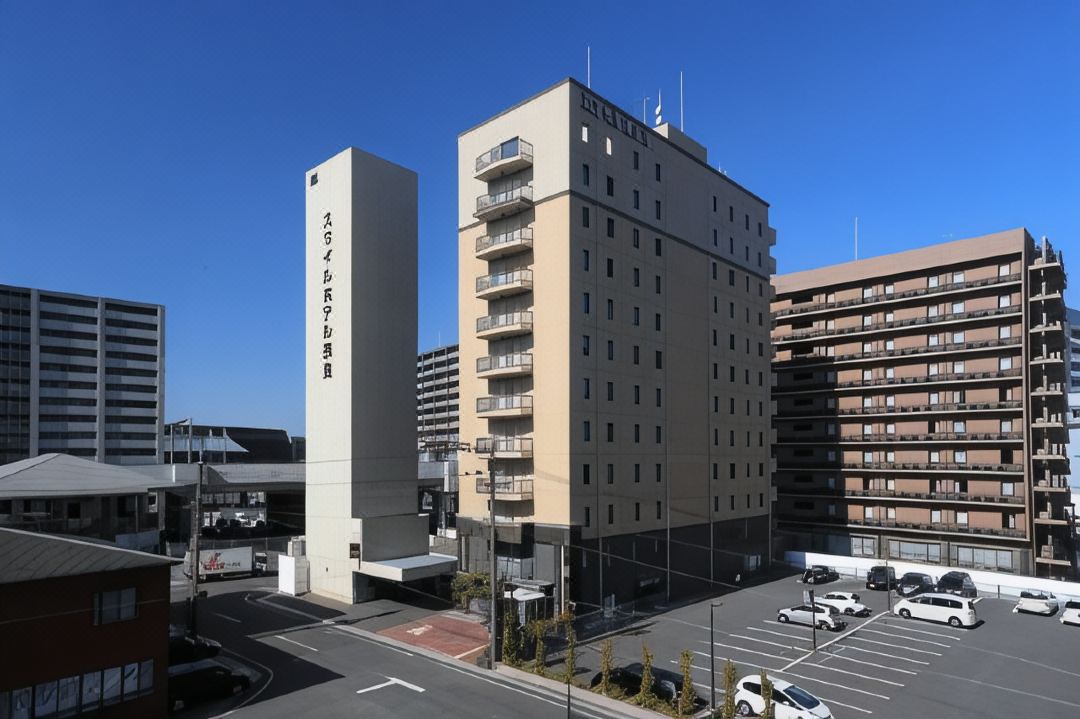




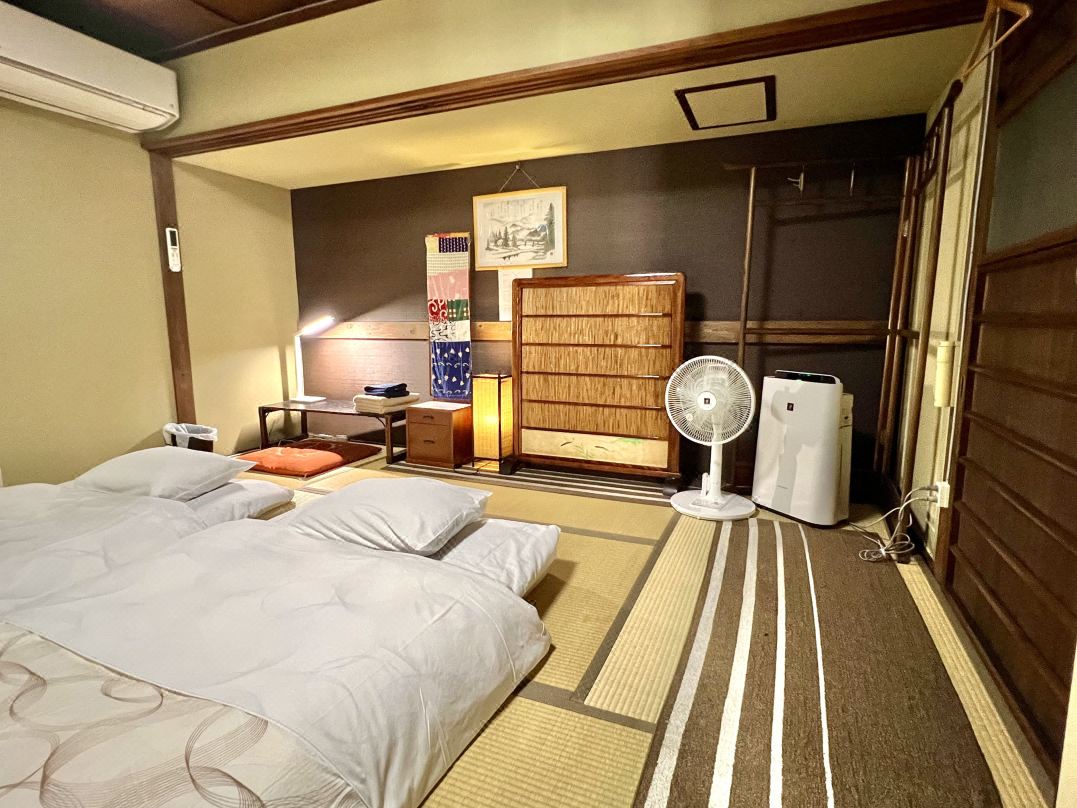
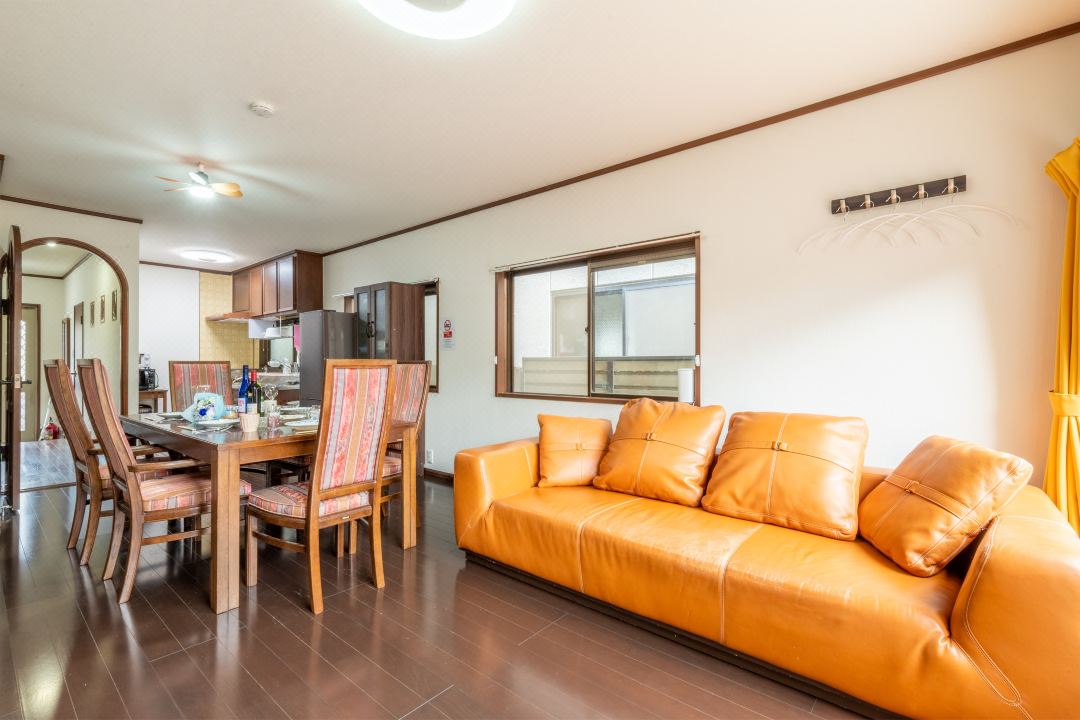
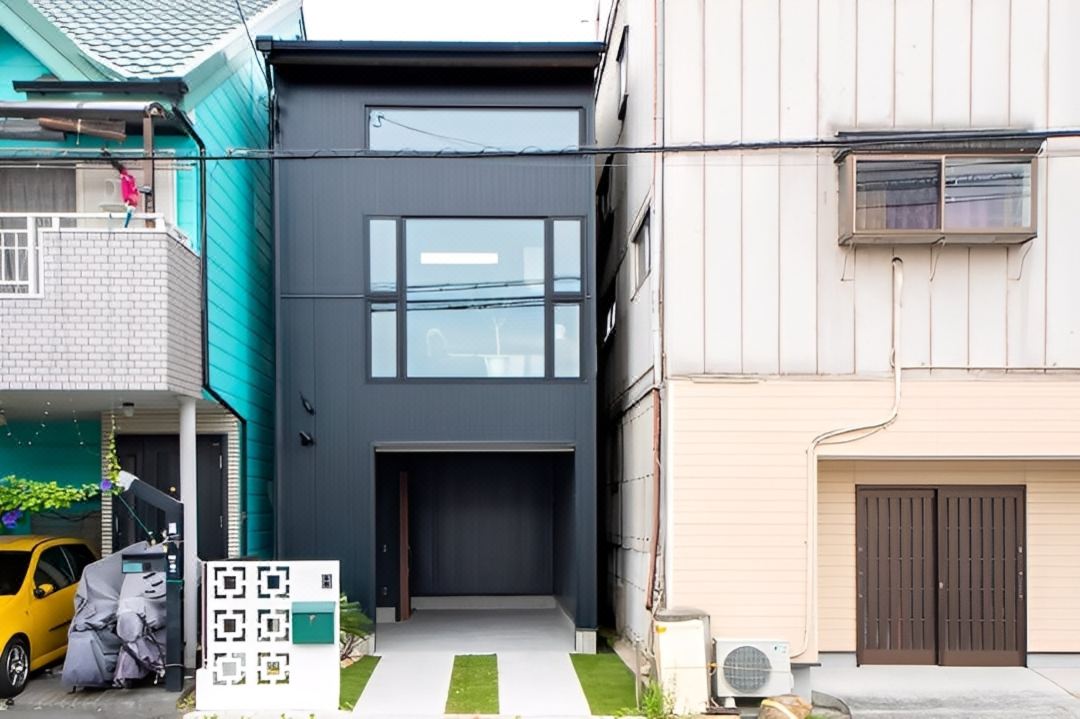



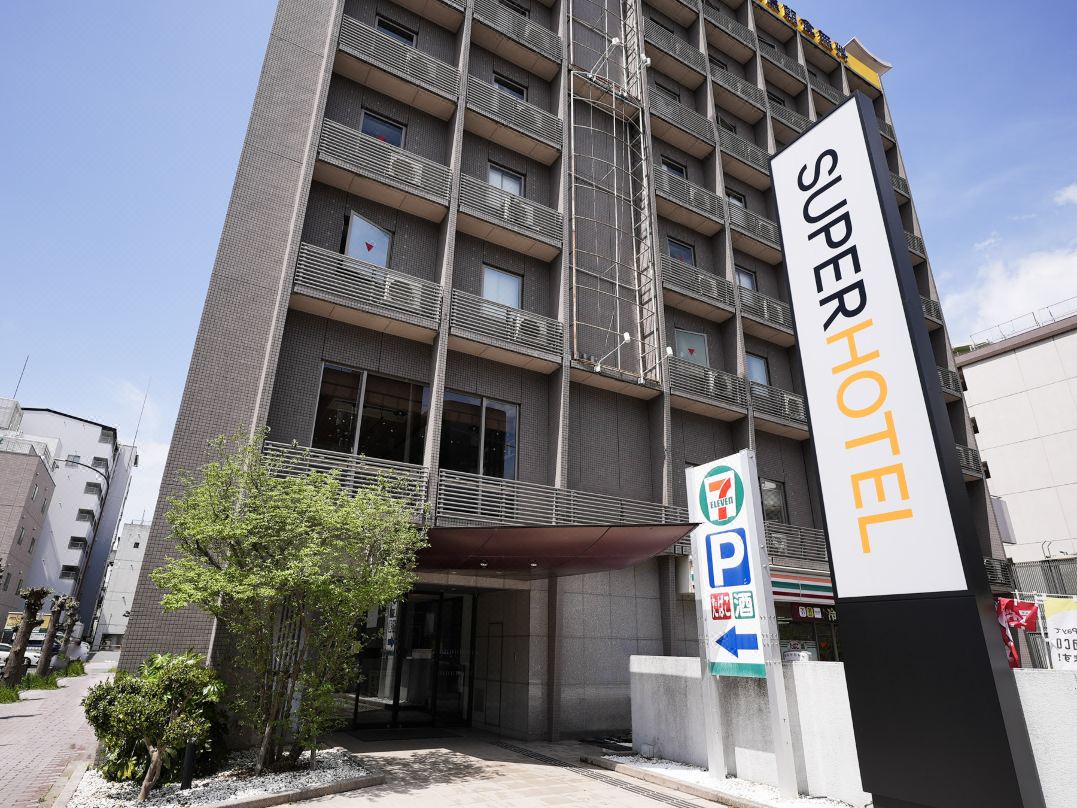

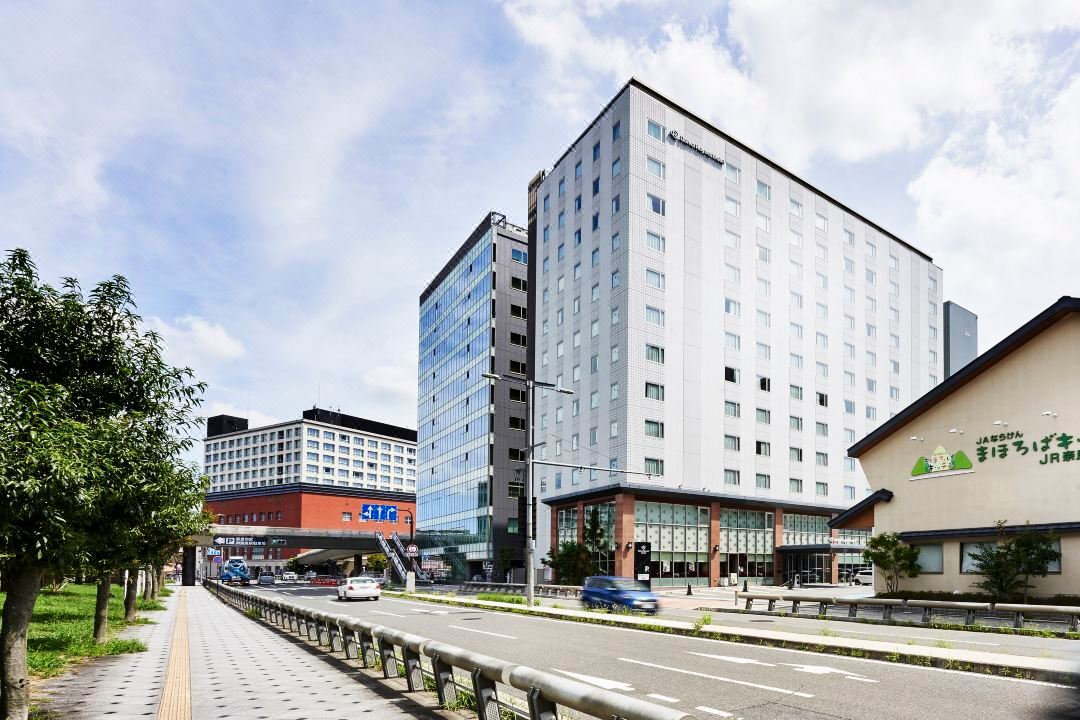
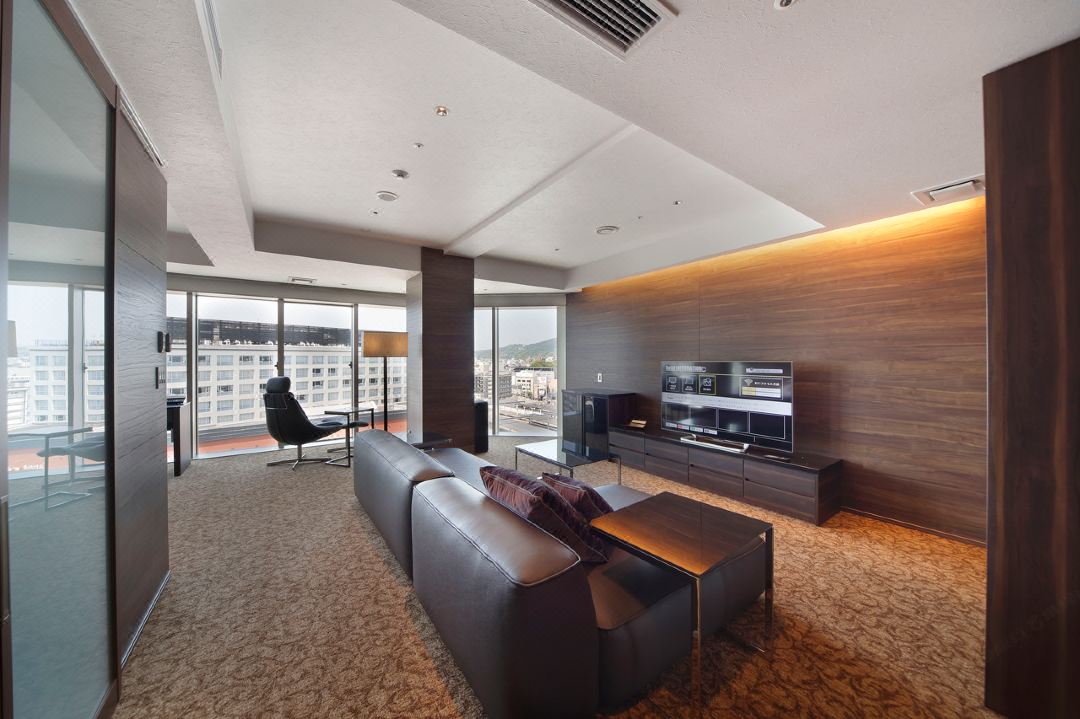


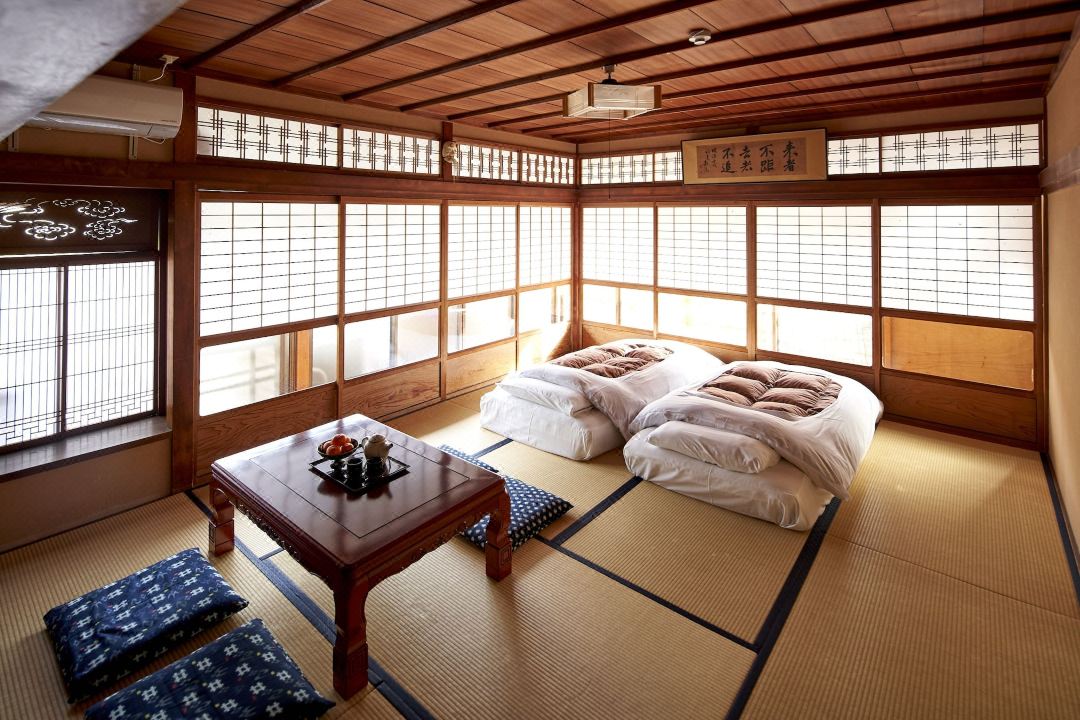







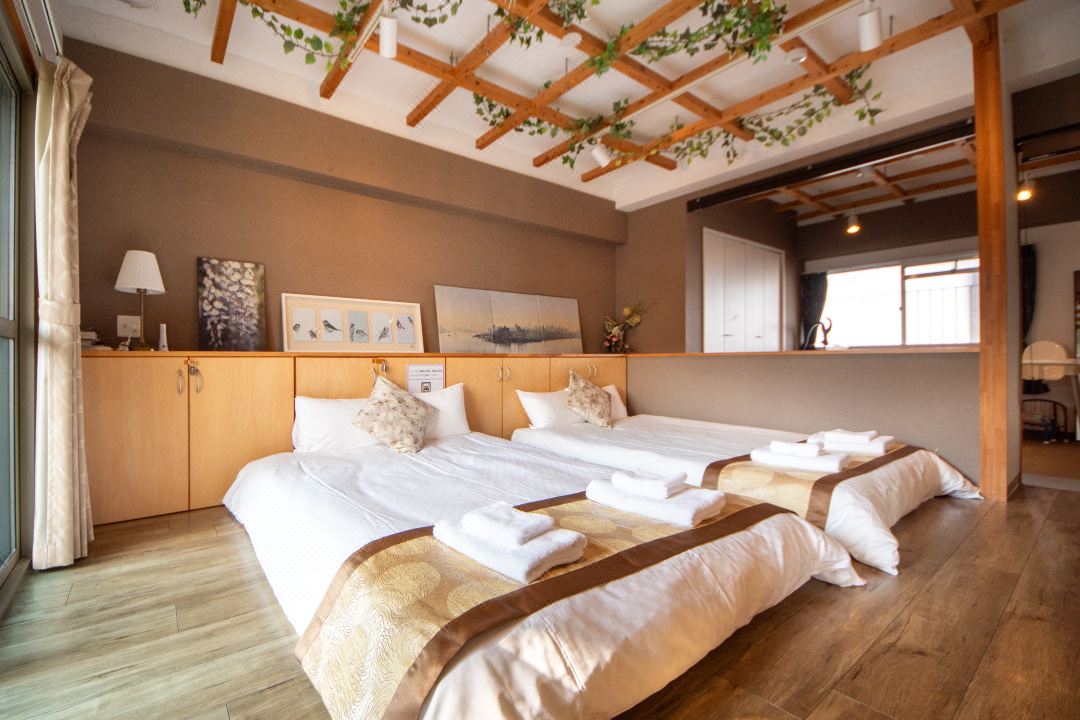





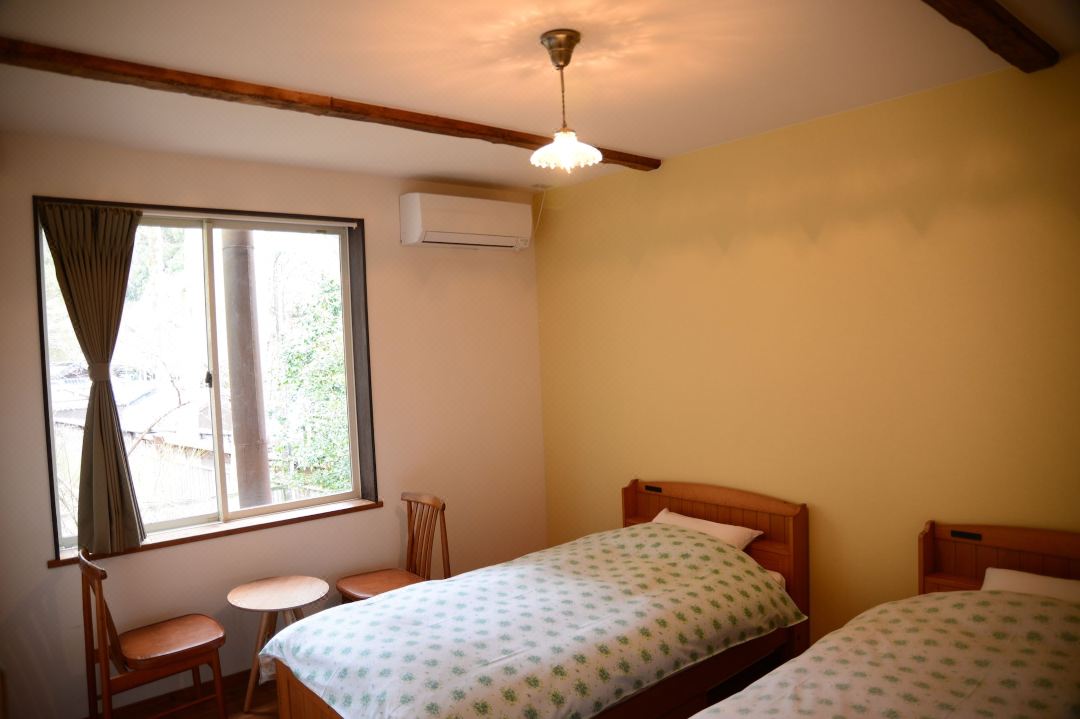













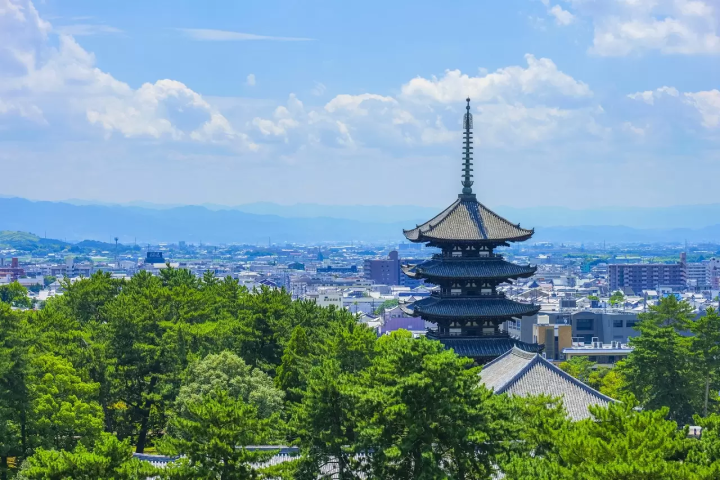

























![[Reopening in March 2026] Ikoma Sanjo Amusement Park Park, 45 minutes from Osaka , with free admission](https://resources.matcha-jp.com/resize/720x2000/2024/08/28-194409.webp)
![[Gunma] 5 recommended gourmet foods at Kawaba Denen Plaza Roadside Station!](https://resources.matcha-jp.com/resize/720x2000/2025/02/26-225970.webp)
![[Kanazawa] Enjoy the world of gold leaf to the fullest in the city with the highest production volume in Japan](https://resources.matcha-jp.com/resize/720x2000/2025/11/12-249564.webp)
![[2026] Family Winter Trip to Suzuka Circuit! – For Both Day trips and Overnight Stays!](https://resources.matcha-jp.com/resize/720x2000/2025/12/26-254097.webp)
